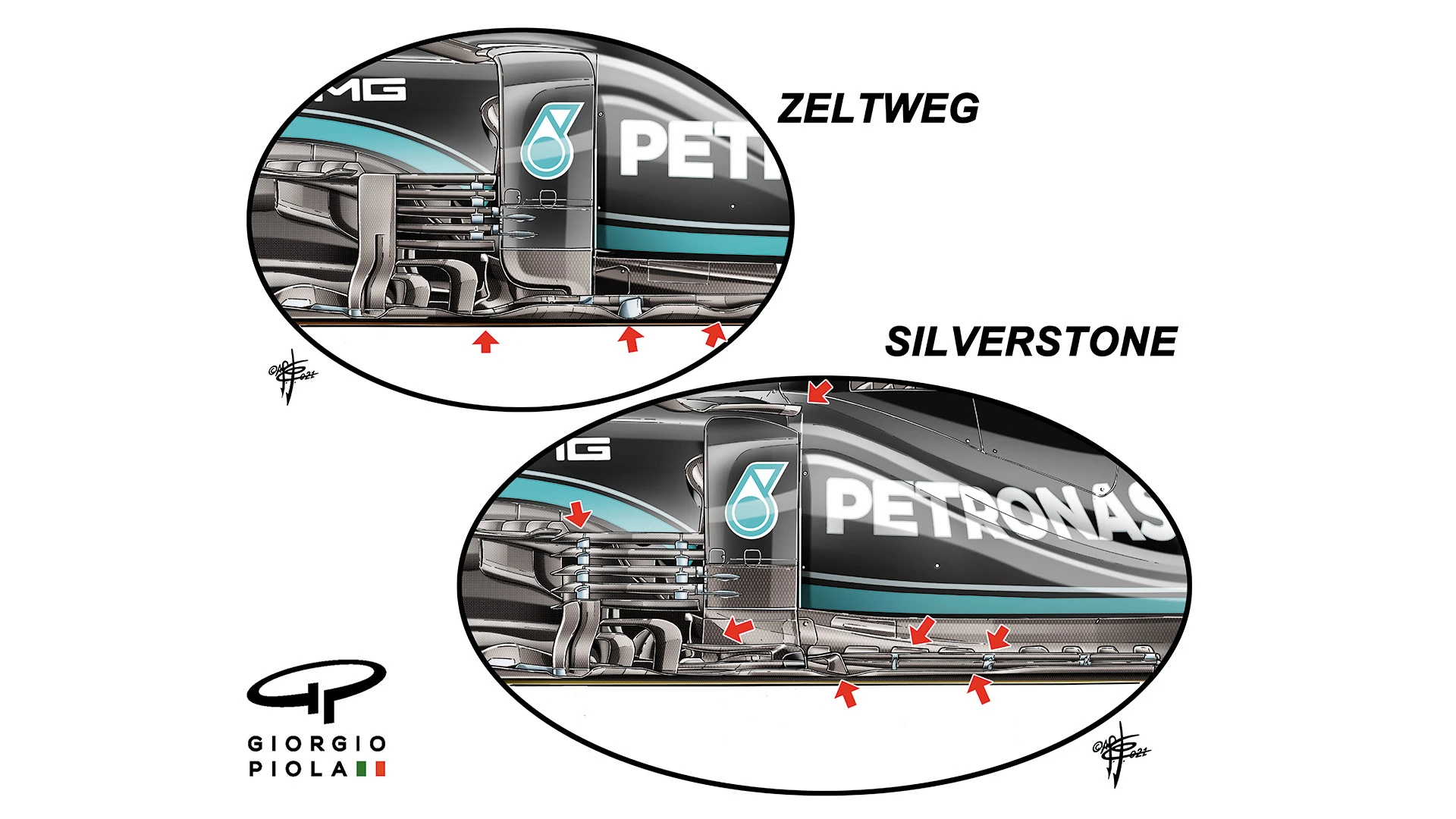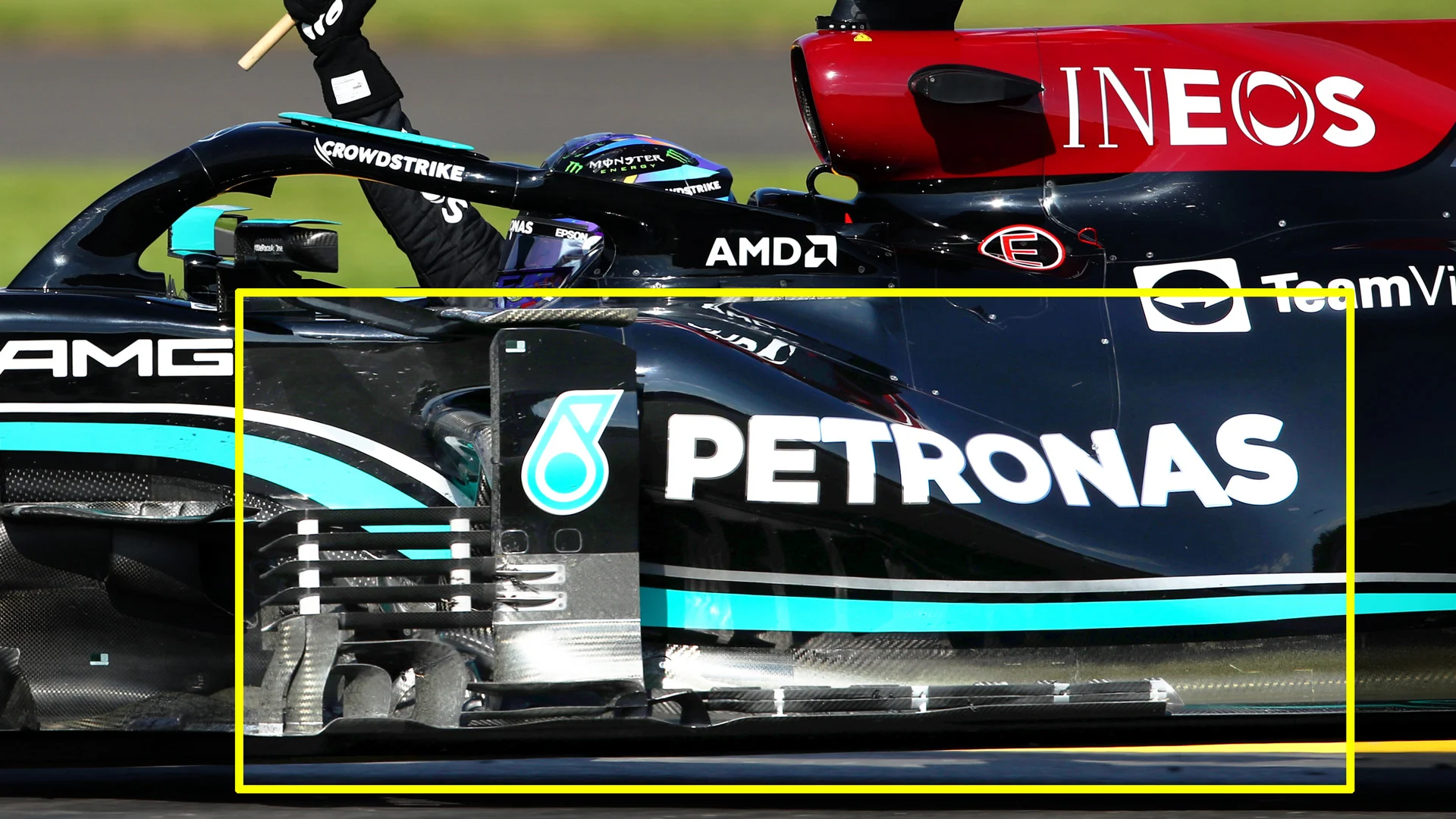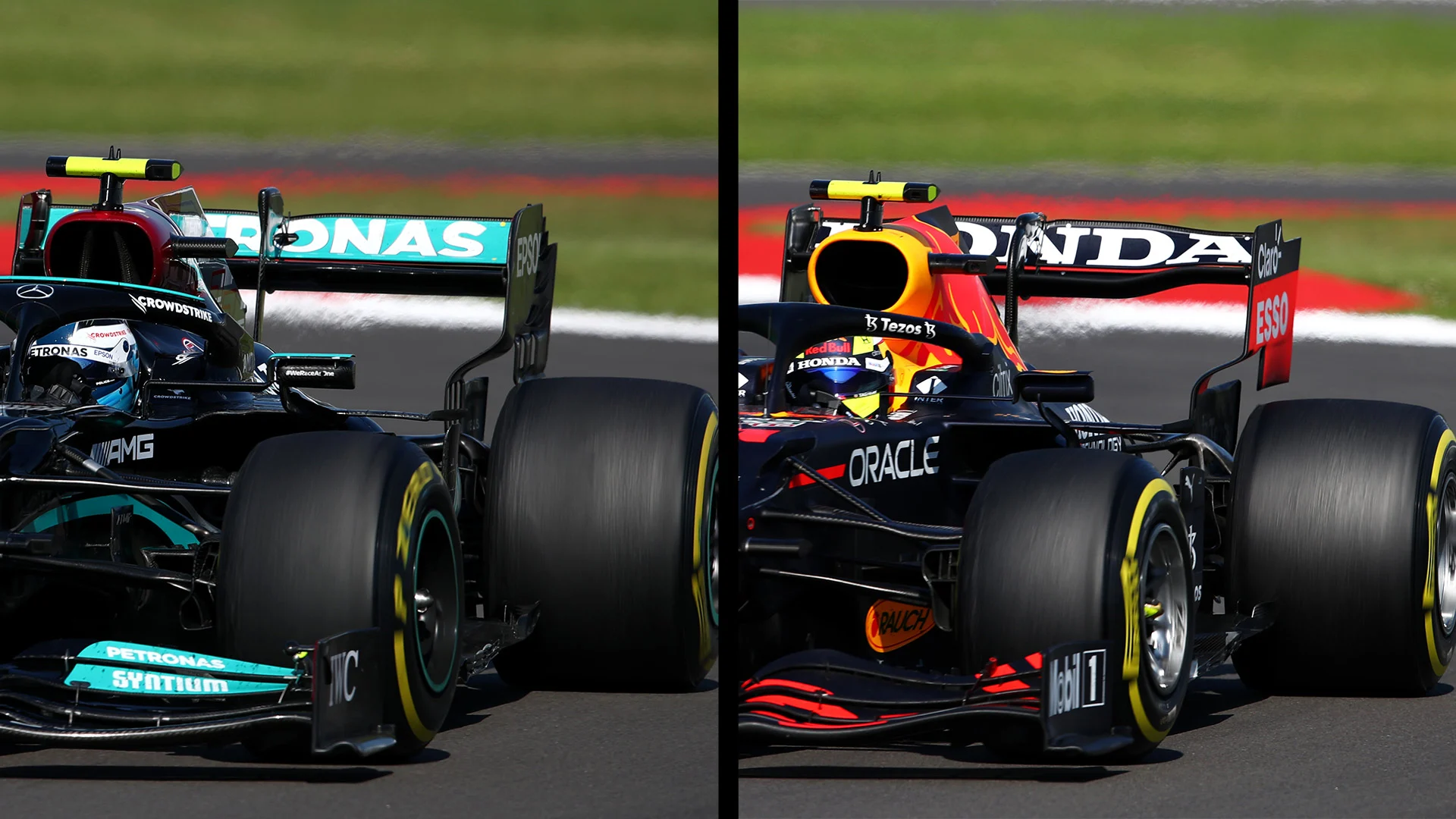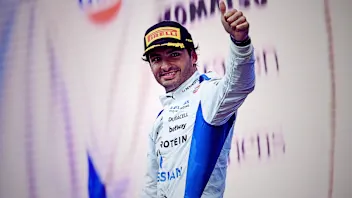TECH TUESDAY: Mercedes' last big 2021 upgrade that helped Hamilton to Silverstone victory


Mark Hughes examines the upgrades Mercedes brought to the 2021 British Grand Prix, where Lewis Hamilton took an eighth Silverstone F1 victory to claw back some vital ground in the title fight with Max Verstappen.
Mercedes switched off their 2021 wind tunnel programme some races ago and devoted it entirely to the 2022 car. But the last pieces of that limited ‘21 tunnel programme were only manufactured and ready to go onto the car in time for the British Grand Prix.
They comprised a totally reworked bargeboard area around the front corner of the floor, a reprofiled floor edge and re-angled deflectors.
ANALYSIS: Comparing the key differences between the 2021 and 2022 F1 car designs

The exact geometry changes of the vanes and latticework can be seen in the drawing, but the crucial thing is what they are seeking to achieve. They represent a slight shift in emphasis between the underfloor airflow and that going around the sidepods to eventually meet up with the underfloor flow as it exits through the diffuser.
There is a finite amount of air hitting the car to work with and achieving the most efficient trade-off between directing it beneath and around the floor is at the heart of what the aerodynamicists are striving for.
READ MORE: What is the ‘Z-shaped’ floor solution – and why are more and more teams using it?
Mercedes appear to be seeking to extract air from the front corner of the floor, inducing a lower pressure there, which can energise the whole floor, especially if the extracted air is retrained into the flow around the sidepods effectively so as to give more energy to that flow as it meets that which is exiting the diffuser.
The Mercedes’ underfloor is limited in how hard it can suck the car to the ground by its relatively shallow angle compared to a high-rake car. These latest changes seek to offset that effect as far as possible.

It’s difficult to judge how effective they were as the circuit layout is so different to that of the previous races in Austria. Although the Mercedes was the fastest qualifier at Silverstone, that may have owed a lot to the fact that the session was held in the coolest conditions of the weekend when the Red Bull’s front tyres were struggling to quickly reach their optimum temperature.
In all other running, on a track temperature high enough to banish the Red Bull’s tyre problems, the RB16B looked quicker.
READ MORE: Ross Brawn on why he hopes we don't see a repeat of Hamilton and Verstappen's clash

But the latest changes will certainly have played their part in Mercedes’ decision to go with a relatively low rear-wing level here. In Austria they were running more wing than Red Bull.
In Silverstone they were running less wing (above). Was this just a reflection on the differing optimum drag/downforce trade-offs between two very different cars on two very different tracks? Or an indication that the Merc’s latest tweaks have allowed them to run the run the car more efficiently?
The picture will build over the forthcoming races. But it’s clear that Mercedes’ last squeeze of the ’21 lemon has delivered at least some juice.
Watch the video below to see more on the latest Mercedes upgrades.
READ MORE: How Hamilton and Mercedes negated the impact of 10s penalty to win at Silverstone
Next Up
Related Articles
 ExclusiveWhy Sainz feels ‘vindicated’ after his first Williams year
ExclusiveWhy Sainz feels ‘vindicated’ after his first Williams year Quiz10 quiz questions on British F1 World Champions
Quiz10 quiz questions on British F1 World Champions Albon names moment he's most proud of from 2025
Albon names moment he's most proud of from 2025 ExclusiveVesti on life as Mercedes reserve and his F1 plan
ExclusiveVesti on life as Mercedes reserve and his F1 plan F1 CEO Domenicali reflects on 'phenomenal' 2025
F1 CEO Domenicali reflects on 'phenomenal' 2025 The best moments from F1 Secret Santa over the years
The best moments from F1 Secret Santa over the years